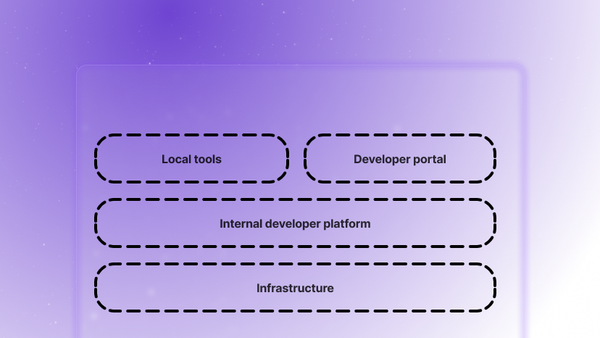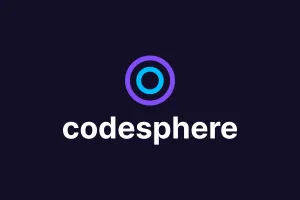Internal Developer Platforms, Developer Portals & Beyond
Decoding the modern developer experience. Learn the key dimensions to evaluate them and discover what lies beyond the traditional IDP model.

Table of Contents
IDPs, Developer Portals, and Beyond: Decoding the Modern Developer Experience
In today's engineering landscape, Internal Developer Platforms (IDPs) are hailed as the solution to developer productivity. The promise is simple: abstract away complex infrastructure so developers can focus on writing code (or managing AI agents writing code :D).
But a critical question is often overlooked: How much abstraction is enough?
Many platforms calling themselves IDPs are essentially thin orchestration layers. They help manage existing tools but leave developers entangled in the complexities of Kubernetes, YAML files, and specific cloud provider services. This approach not only fails to deliver on the core promise of simplicity but also creates new bottlenecks and locks organizations into a specific infrastructure.
This post digs deeper. We will define the core concepts, compare the different philosophical approaches of leading solutions, and reveal how a new generation of platforms is evolving beyond this traditional IDP model to solve these challenges at their root.
The Core Concepts: Engine vs. Dashboard
To understand the landscape, let's start with the two main components. The distinction is best understood as the difference between a car's engine and its dashboard.
What is an Internal Developer Platform (IDP)? The Engine
An IDP is the foundational automation engine. Its main job is to give developers a standardized, self-service way to build and deploy applications. Critically, the value of an IDP is directly proportional to how well it abstracts away the underlying complexity. A great IDP makes infrastructure invisible; a poor one just gives developers a new set of complex tools to learn.
What is a Developer Portal? The Dashboard
The Developer Portal is the user-friendly dashboard for your entire tech ecosystem. It’s the single place where developers can discover internal services, access documentation, check deployment statuses, and find owners for different pieces of software, reducing the cognitive load of juggling multiple tools.
The Hidden Dependency
A powerful IDP and a sleek portal are essential, but they both rely on a third, critical component: the underlying infrastructure. Most IDPs are designed to be "bring-your-own-infrastructure," meaning they are simply a layer you must install, configure, and operate on top of AWS, GCP, or on-premise servers. This fundamental dependency is the source of the lock-in and complexity we mentioned earlier, and it's where the most significant differences between platforms.
The Promise vs. The Pitfall
The need for these platforms arises from a simple truth: the modern cloud is powerful, but it is also brutally complex. Without guardrails, this complexity leads to inconsistent environments, security vulnerabilities, and spiraling costs. IDPs promise to solve this.
Organizations adopt them to achieve a specific set of goals:
- Productivity: Free developers from infrastructure burdens
- Consistency: Standardize tools and workflows across all teams
- Governance: Enforce security and compliance standards automatically
- Operability: Ensure that what is built can be run and maintained reliably
- Ease of Onboarding: Help new developers become productive in days, not weeks
However, the promise often falls short. The 2024 DORA Report from Google Cloud found that while a good IDP boosts performance, a poorly implemented one can actually have a negative impact. An IDP that offers a leaky abstraction or simply wraps old complexities in a new UI is often worse than no platform at all. It adds another tool to learn without removing the underlying friction.
This brings us to the crucial question: how do you distinguish a solid solution from another layer of complexity?
The Four Dimensions for Evaluating Developer Platforms
To cut through the marketing hype, we must evaluate platforms across four dimensions. These expose the core philosophy of a solution and determine whether it will empower or frustrate your team.
- Degree of Self-Service: How much autonomy does a developer have to deploy and manage applications without filing a ticket or waiting for a platform team?
- Degree of Abstraction: How much of the underlying complexity (Kubernetes, YAML, cloud-specific APIs) is truly hidden? This is the most critical factor in reducing cognitive load.
- Developer Environment Integration: Does the platform only handle deployment (the "outer loop"), or does it also integrate tools for the "inner loop" of coding, building, and debugging?
- Infrastructure Dependency: Does the platform provide its own managed infrastructure, or must you provide, operate, and order for your own from hyperscalers? This directly impacts your total cost of ownership and risk of vendor lock-in.
Beyond the Comparison: From an IDP to a Unified Application Layer
The table reveals a clear trend. Humanitec and Red Hat are powerful "bring-your-own-infrastructure" solutions. They focus on orchestrating your existing toolchains, providing a medium level of abstraction that empowers teams but still demands significant Kubernetes or OpenShift expertise from developers. Datadog leverages its core strength in observability, offering a portal that gives developers self-service access to monitoring and templated deployments within its SaaS ecosystem.
Codesphere stands apart by taking a fundamentally different approach. It isn't just an orchestration layer; it's a complete, unified application platform that goes far beyond the traditional IDP model.
What this means in practice:
- True "Zero-Config" Experience: While others reduce complexity, Codesphere eliminates it. With an integrated cloud IDE, CI/CD, and runtime, the entire "inner loop" of development happens inside the platform
- Built-in Managed Services & Hosting: Go from an idea to a production-ready application. Managed databases (PostgreSQL, MongoDB, etc.), auto-scaling, load balancing, and TLS certificates are included, not add-ons
- Legacy and Modern Workloads, Unified: Uniquely, Codesphere can run Windows and Linux VMs alongside cloud-native containers and Codesphere’s own reactive deployments. This creates a seamless, gradual path for modernizing legacy systems without managing separate platforms
- Cost Efficiency by Design: Patented "Off-When-Unused" technology automatically scales development and preview environments to zero, dramatically cutting costs on non-production infrastructure
- Full Portability & Sovereignty: Because Codesphere provides the entire stack, you get a consistent experience everywhere—from its managed cloud to a fully air-gapped on-premise installation, ensuring data sovereignty for regulated industries
- Integrated APM: Application Performance Monitoring (logs, metrics, traces) is a core feature, not an expensive third-party licence like Datadog
This integrated approach represents the final leap: moving from an IDP that manages complexity to a unified platform that replaces it entirely, we call it the end-game infrastructure layer - if you want to learn how this may help your organization get in touch.
